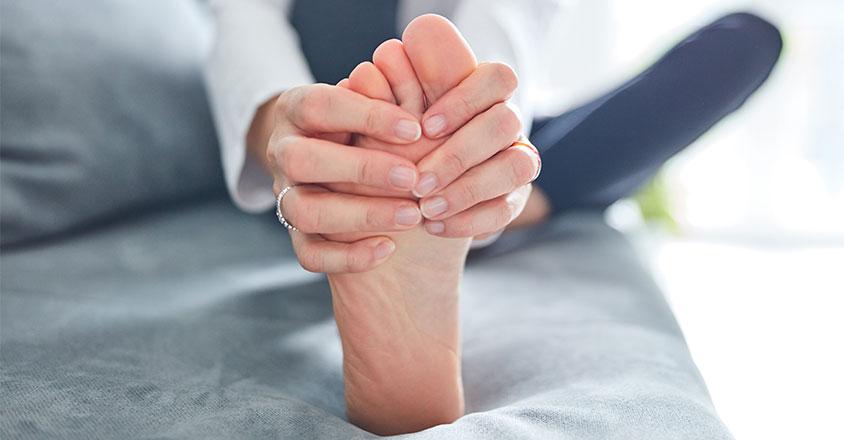

Toe to Toe – Is buddy-taping the way to go?
You stub your toe. It turns purple, swells and hurts to wear a shoe. Should you limp to your doctor, or take care of the toe yourself?
Medical treatment for a broken toe depends on which toe is broken, where in the toe the break is, and the severity of the break. Medical treatment is needed more often for a broken big toe than for the other toes. One way to know whether your toe is broken is if you can put weight on the foot. If you can walk on it without pain or limping, it probably is not broken.
Home care for a broken toe includes ice and elevation. If you don’t have diabetes or peripheral arterial disease, your toe can be “buddy-taped” to your uninjured toe next to it. Protect your skin by putting padding between your toes before you tape them together. Your injured toe may need to be buddy-taped for two to four weeks to heal. If it hurts more after buddy-taping it, remove the tape.
“There are cases when other treatment might be needed. If your toe is at a different angle than the toe on the other side, and it wasn’t before your injury, go to a doctor,” said Mark Scott, DPM, podiatric surgery, Genesis Foot & Ankle. “If you buddy-tape the injured toe and it isn’t healing, seek medical care.”
Genesis HealthCare System’s Health and Wellness content conveniently provides accurate and helpful information. Your health history and current health may impact suggestions provided through our Health and Wellness content. Although we hope this information is helpful, it is not a substitute for your doctor's medical advice. Before making any significant changes, please consult your doctor.